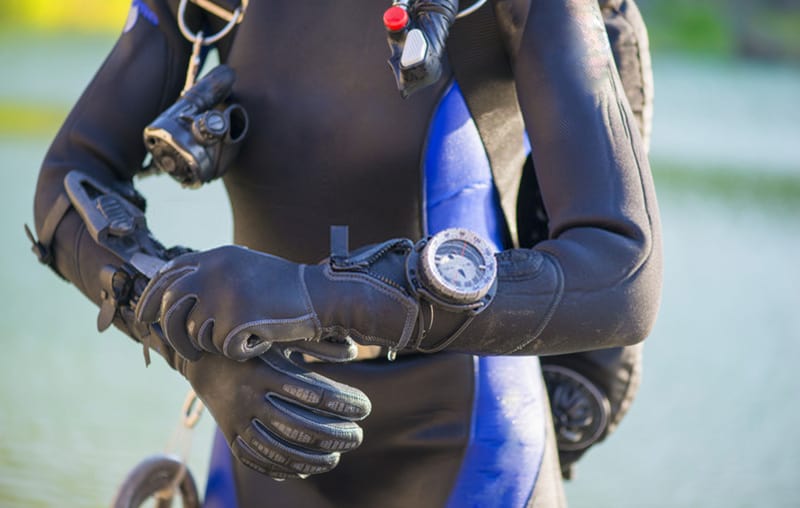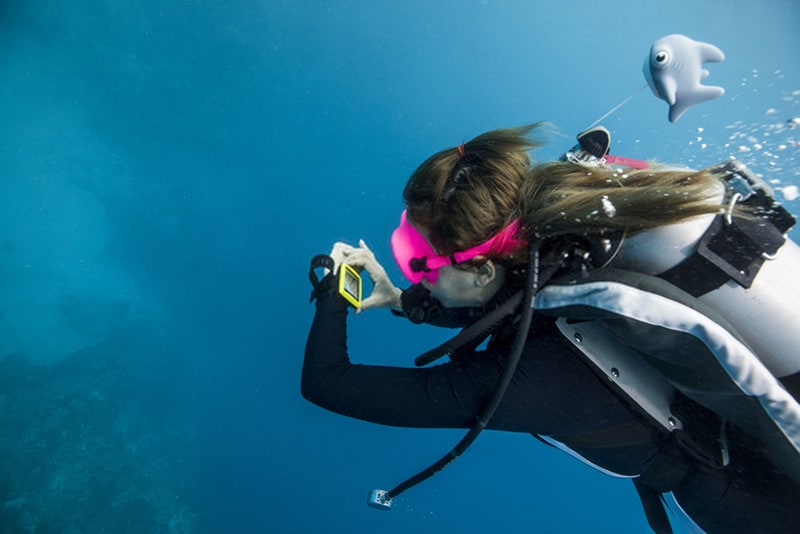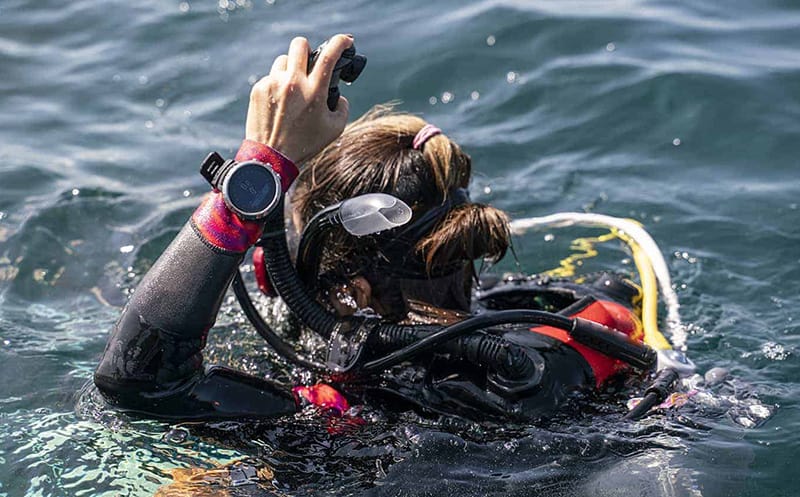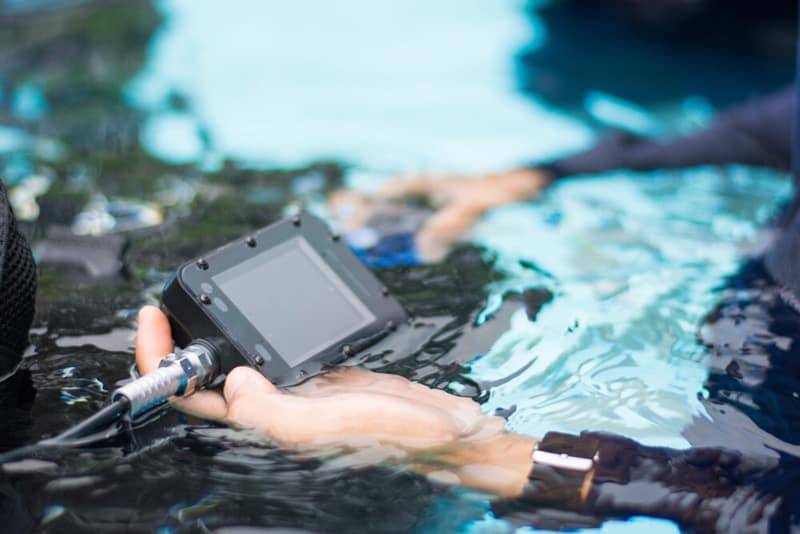A dive computer is an electronic diving device that uses an internal algorithm to calculate decompression time, depth, dive time, repetitions, water temperature, and other relevant information. This machine overcomes the limitations of outdated physical devices.
Therefore, they are loved and become the best diving machine. So, how to use a dive computer? Probably many people still don’t know the correct answer.
In general, dive computers also have similar functions to dive watches. So, anyone who knows how to use a clock will not have too many difficulties with this device.
However, to maximize the capacity of such a modern product, you will need a few important caveats and specific instructions.
So, in this article, I will analyze everything in detail to help you make the best use of this smart device. Get started now!
Table of Contents
How to Use a Dive Computer
The dive computer looks pretty much like your normal wristwatch. Therefore, its usage is also very simple. You just need to bring it to a convenient location to observe then turn on the start button.

In addition to the power button, some of you will have a few other control buttons. You can use them to adjust menus, show other parameters that currently do not appear on the computer screen.
When the machine is ready to start, you just need to bring it with you on your dive to monitor the situation and change according to the instructions.
What you need to observe will appear on the screen, and you need to understand what those numbers say to determine whether you should stay current or change.
Specifically, your dive computer screen will have the following information:
1. Non Stop Limit
Non-stop limits on dive computers are digitally presented on dive boards. Based on this point, you will know when to decompress. It also shows your required dwell time. You just have to observe there and follow.
2. Diving Depth
It is the distance of your current position in the water compared to the ground. Based on this parameter, you will determine how deep you have dived.
Learn more about How Deep Can You Scuba Dive here.
3. Previous Dive Information
The machine will save the previous dive information, and it is very useful for you to analyze the necessary data for the next dive. This information will also help you log into the dive list later. It is a resource for determining whether or not you are allowed to fly.
Because you can’t fly 12 hours after one dive or 18 hours after multiple dives (source: padi.com). This is, of course, referring to flight and dive times that are too close together.
4. Rate Goes Up
This ratio will indicate how quickly you are returning to the ground. Based on these numbers, the machine will beep if you are moving too fast. So, when you hear this sound, you need to adjust your speed to be safe.
Of course, this feature is usually not integrated in cheap dive computers. So you can skip it if you’re looking to buy a mainstream version.
5. Emergency Decompression
Signal if you are moving up too fast and you need to stop immediately.
6. Limit No Decompression
You are only allowed to spend a certain amount of time on each of the different depths. So, receiving this notification, you do not need to stop but continue to move up normally.
7. Consciousness Atmosphere
This is a function that helps you to change your time and depth. So, only use it when you want to dive deeper.
8. Low Battery Warning
This warning will let you know the battery is not working and you need to replace it. This is a very important one because you think about what happens when you are underwater and the computer runs out of battery.
So check the battery before you start and replace it after about 50 dives.
To better understand how to use this particular device, I encourage you to listen to some expert analysis in the video below.
Do You Need a Dive Computer?

See the 15 Best Dive Computers for Beginners here.
1. High Safety
Instead of setting up a plan or diving in with the manual decompression method that takes a lot of experience and sometimes makes mistakes, a diving computer will help you complete the project with high confidence.
As a digital device, the built-in algorithms help you calculate the risks and control the amount of remaining air.
2. Monitor the Rate of Ascent
No matter how professional you are, calculating the experienced ascent speed cannot be completely accurate compared to modern devices. With the dive computer, your ascent rate will be tracked completely accurately and continuously updated.
In addition, it also sounds like an alarm and asks you to slow down if it reaches 10m/min. When exceeding 12km/min, another sound will stop you. Some other smart devices have an additional lock function to prevent you from moving beyond the allowed limit.
This feature is very important and necessary; it helps you to preserve your life during the journey.
3. Dive Log
Through a small hand-held device, everything in your diving journey will be recorded in a specific way, and it is much more detailed than if you use the manual recording.
With only software download, you can save everything to your computer. It’s much more convenient and faster.
Your error-prone manual settings will be completely replaced with this compact hand-held machine. So, if you want to embark on this path or want to become a professional diver, quickly choose a suitable diving computer.
Tips for Using a Dive Computer
To get the most out of your dive computer, there are a few tips you should follow while using it.

1. Use the Machine Sensibly
Learning these things, you will use the machine more rationally for your diving process.
The above information will usually be detailed and specific in the user manual of the machine. Each manufacturer will have different usage.
Therefore, it is best for you to fully understand the models and origins of the brands on the market. From there, choose a machine whose risk tolerance is compatible with yours.
So, even with the help of this diving equipment, you still have to plan your dives with a separate diving board. Calculating repeated group states is then a must.
You can only move after completing the above calculations. If you want to rely entirely on the computer, you must make sure it has recorded all your exposure configuration.
Using the machine according to its function is the way to increase the life of the device and the user himself. Therefore, learning about the engine well and regularly observing its operation is essential.
2. Be Mindful Of Device Limitations
Diving computers are useful and necessary tools for our diving process. It is very good at doing programmed calculations, but some other information regarding before, during and after dives is not advantageous.
For example, your medical condition, physical level, or susceptibility to decompression stress are factors that the machine cannot determine. In addition, the device is also obscure about thermal stress or physical exertion between dives.
Although some diving machines provide water temperature, this indicator is not useful for determining heat stress situations.
This is due to the impact of the clothing worn by the diver because the heat pressure of a person wearing a scuba wetsuit will be different from that of a diver wearing a bathing suit or cold water drysuit.
Failure to identify these factors can greatly affect divers. We will not be able to judge the fitness to get through the arduous dive accurately. Therefore, the safest thing is to practice a lot and prepare in the best state to start.
Diving computers are very diverse, and each has a different limitation. Therefore, you need to learn carefully about the device you have chosen to capture the blind spots of the product. From there, use it reasonably to protect yourself.
Mistakes When Using a Dive Computer
Inadequate understanding will lead to serious mistakes when using this device. These myths may be nothing at first, but over time will bring many dangers that can be life-threatening. So you need to catch those mistakes to put yourself out of trouble.
1. Don’t Know How to Use It Properly
As always, how an item is used is also very important. It not only helps you to maximize the power of the product but also avoids unnecessary troubles. It will be bad if you don’t know how to start the dive computer or understand the words on the electronic board.
Thus, you will not be able to determine when you are safe when you are in danger; should you slow down or speed up now? If you are in the water without knowing these things, it means your life is in danger.
So, the first thing when you bring the machine home is to learn all the uses of the diving calculator, the meaning of the numbers, and the function of this machine to use it properly.
2. Select the Wrong Device
Many people think dive computers are all pretty much the same. But the truth is there are two types of diving computers: wrist diving computers and control diving computers.
Wrist diving calculators are about the same shape and size as a watch. It is more convenient and simple for users. Therefore, people often use this type today.
In addition, this type also has the air integrated dive computer series. It will help you to determine air pressure and measure the time remaining with current air consumption.
Based on this, you will decide when to return to shore. Using this, you don’t need a submersible pressure gauge which helps you reduce the gear you carry when diving.
A console dive computer is a more economical option. It usually comes with a pressure gauge. In terms of modern capabilities, this device does not equal the wrist design. However, the large screen makes the numbers easier to read.

Each of these types has different uses, and features are not completely similar. Therefore, you cannot apply the settings of one machine to another. This can lead to serious, life-threatening errors.
Frequently Asked Questions (FAQs)
I have gathered some frequently asked questions on this topic below. Hope these explanations are helpful to you.
Can You Use a Dive Computer as a Watch?
Dive watches are special watches with high-pressure resistance (can withstand water pressure at a depth of at least 100m) for scuba diving. Their main function is to keep track of the time at the deepest position reached by the diver.
Meanwhile, a diving computer is a device that calculates decompression limits using depth and other functions. It evaluates your driving record using an internal algorithm to establish a safe diving plan for you.
Obviously, two machines with two different missions to help you stay disciplined but stay safe. Therefore, they are not interchangeable.
The design of the watch is quite similar to the watch. Especially nowadays, many very creative manufacturers have made very trendy and smart computers so that you can wear them every day as a watch.
Check out the 15 High-Quality Dive Watches under $1000, or the 10 First-Rate Dive Watches under $2000 here.
How Long Does a Dive Computer Last?
Machines from different brands with different prices will not have the same lifespan. However, it is estimated that if you use your device for an hour a day, its lifespan is 300 days.
What Hand Do You Wear a Dive Computer On?
You should always check your depth for your safety and continuously operate the pump set to adjust the depth. Therefore, people often choose to wear the computer in the right hand.
However, you do not necessarily have to do so; wear it in the most convenient and appropriate position so that you can always read the parameters.
Conclusion
Using a computer is also quite simple, so there is no obstacle for you to use it. However, the more you understand and firmly grasp the notes in use, the more you will avoid confusing states, especially underwater.
Therefore, we hope that the above sharing will help you in the future.
Please share this information on social networks! Each reach will be a great motivation for us to create quality content.
If you have any questions, please leave a comment below for expert advice.
